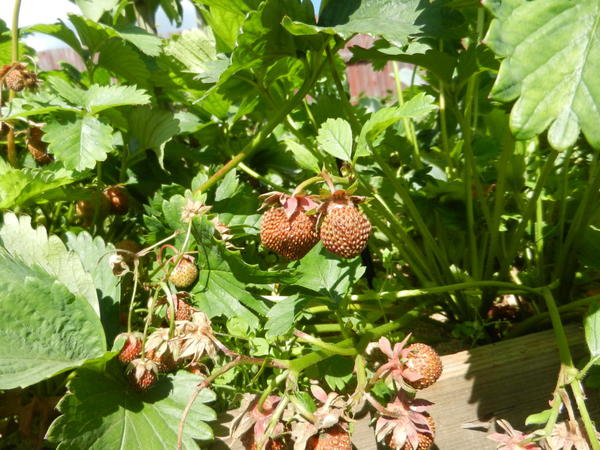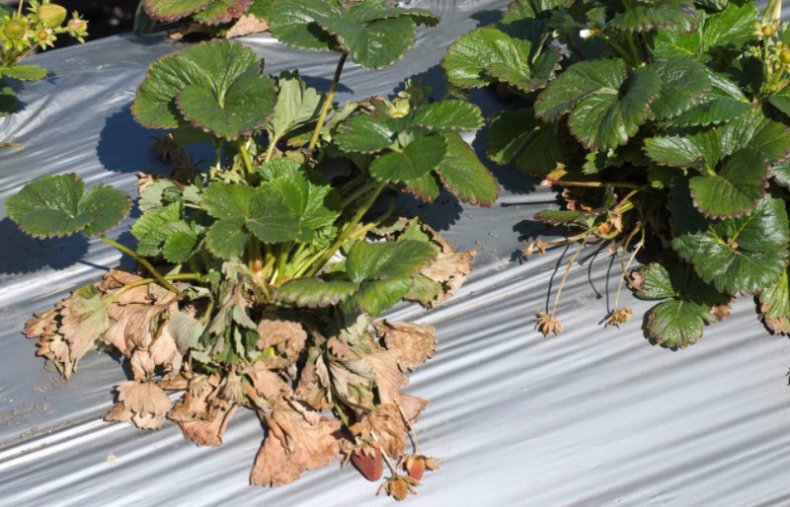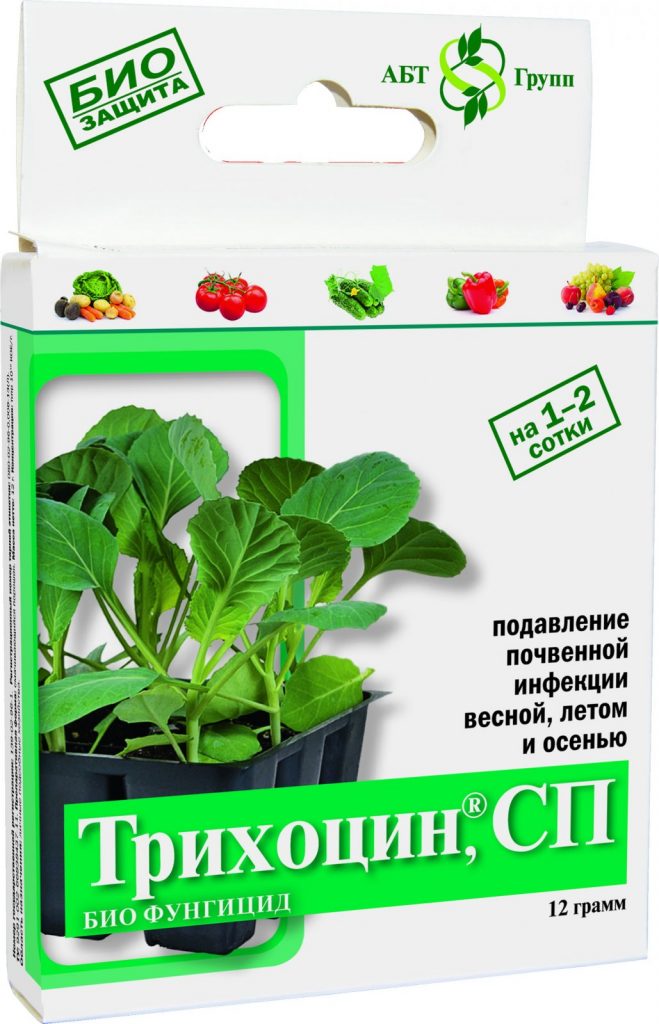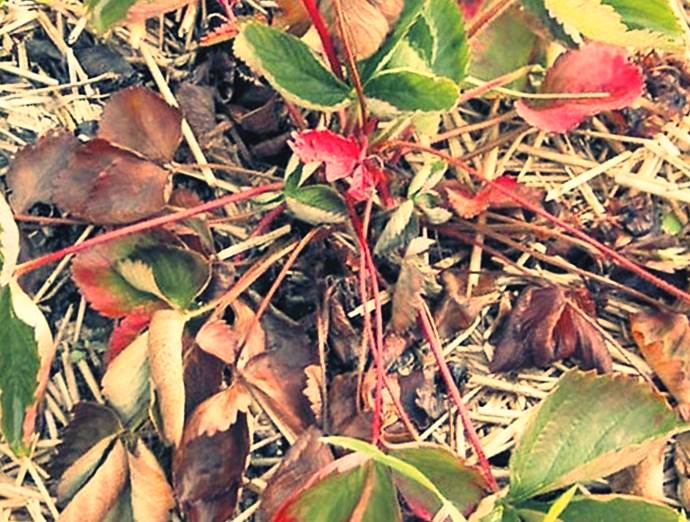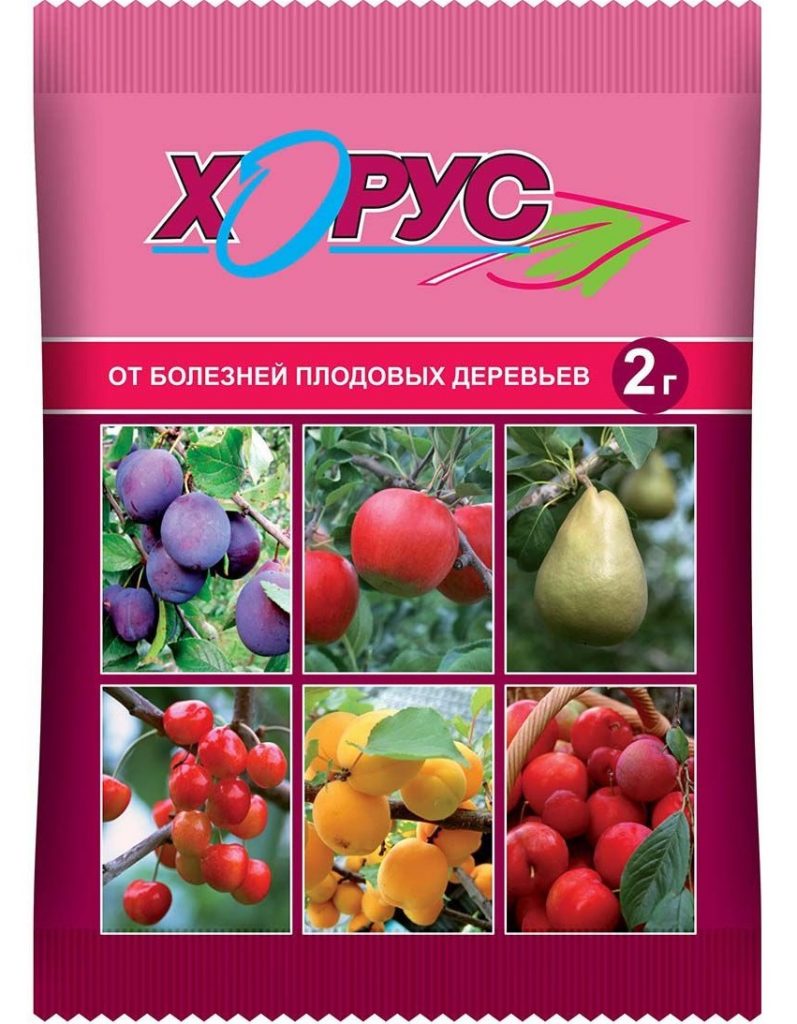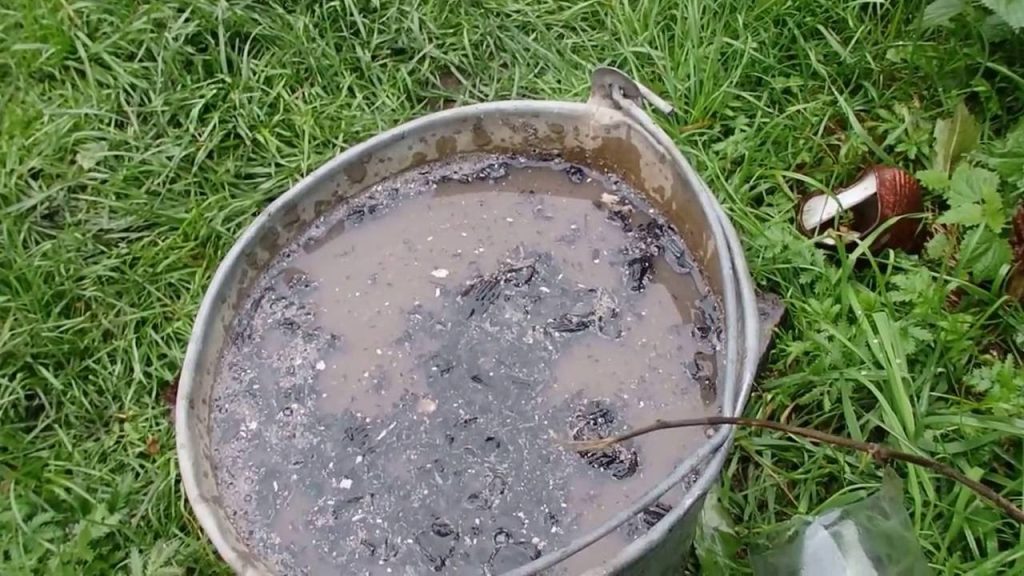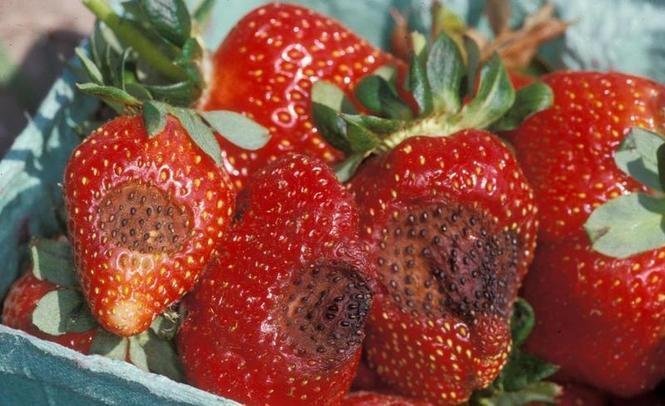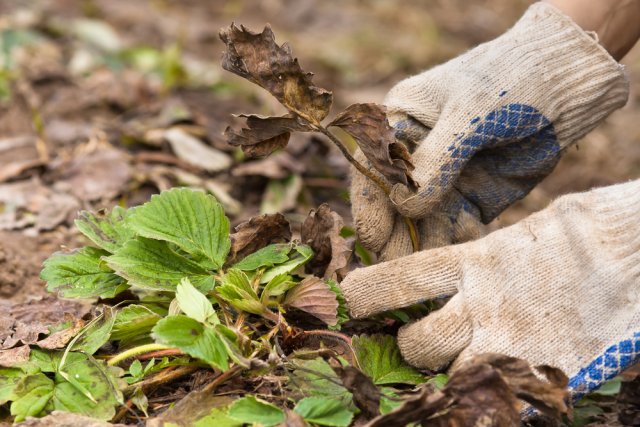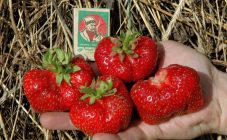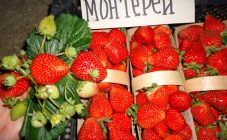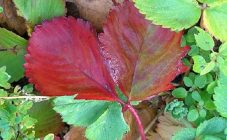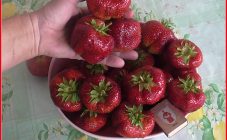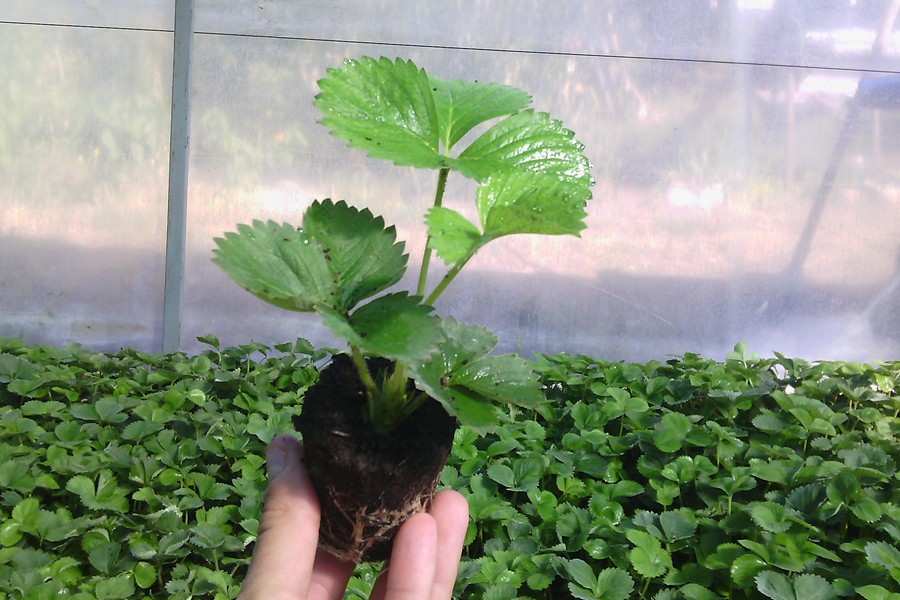Content:
Gardeners are always looking forward to the strawberry harvest. However, no one is immune from various misfortunes that can happen to the berry. If in the middle of the season wilting and drying of the bush and berries occurs, it means that the culture is sick. The summer resident may not know why strawberries and berries are drying what to do with it. There are several reasons why garden strawberries can dry out.
Diseases in which the bushes dry out:
- Verticillary wilting;
- Fusarium wilting;
- Anthracnose.
Each of these ailments has its own characteristics and symptoms. After the gardener has discovered signs of the disease, he must take control measures, otherwise the entire crop can be lost.
Verticillary wilting
Another name for the disease is wilt. The cause of the disease is the fungus pathogen Verticillium. It spreads through the earth. Maybe for 10 years it is in the soil and does not give itself out in any way. But as soon as a suitable culture appears, he immediately attacks it. The disease starts from the roots. It is through the root hairs that the fungus enters the plant body. When the pathogen Verticillium is in the root system, it begins to multiply actively, capturing the root collar, stems. The bush ceases to receive nutrition, as the roots are blocked by the fungus.
Spores of the pathogen can be on the site quite by accident. For example, they are brought by the wind, they end up on purchased seedlings, inventory, and fall into the soil with water from a contaminated source.
Signs of verticillary wilting
Wilt can develop rapidly or gradually. In the first version, the gardener notices the transient drying of the bush. At first, the bush looks drooping. Further, the lower leaves begin to brown. The color change begins gradually. The tip of the leaf plate darkens. Then the entire plate begins to turn red or yellow. If fruiting has already begun, then the berry, the flower rot and dry out. If the disease is rapid, then literally in 5 days the entire bush dries up. Usually this type of disease is observed on soils where sand prevails.
The gradual development of verticillary wilting can take a long time. This form is called chronic. Garden strawberries can dry out for 1.5 years or more. Dry leaves are visible on the bush, it stops developing. After some time, he stops bearing fruit and turns into a dwarf. After 1.5-2.5 years, the plant dies. If you look at the insides of the roots of a diseased plant, they turn out to be dark, black, brown. In the final stage of the disease, the root dries out and rots.
Treatment
If the strawberry bushes are drying, what should the summer resident do? In the case when the gardener has identified verticillary wilting, then it is important for him to understand at what stage the disease is. If it is just beginning, then it makes sense to fight with drugs. If the plant is almost all dry, then it would be wiser to get rid of it. The bushes are dug up and burned.
Trichocin is diluted in proportions of 10 g. preparation for 1 liter of water. The drug can be used 2-4 times. The break between watering is done for 14 days. The cost of Trichocin is about 150 rubles for 6 grams.
Working with drugs is pretty simple. The advantage of Agat is that spraying is carried out only once, and also at a cheaper price. Even a novice gardener can handle Agat and Trichocin.
You can save the garden strawberry plantation with the help of the therapeutic fungicide Fundazol. It has a low toxicity level. 10 gr. the fungicide is placed in a 10 liter bucket of water. Mix well. The bushes are sprayed completely. The procedure should be carried out twice a season. First time before the flowers come out. The second time is after harvesting. According to reviews, this antifungal agent is one of the most effective. However, experienced gardeners assure that Fundazol is recommended only for mother bushes. The cost of the smallest pack of fungicide (10 grams) is about 30-50 rubles.
Prevention measures
- Among the preventive measures is the purchase of only high-quality seedlings.
- Strawberry planting is not done very thickly. The optimal distance between the bushes is 35-45 cm.
- Before placing the roots in the ground, they are treated with Agate 25K or Humat K. You can simply dip them in one of the solutions. Agate is bred in proportions: 7 gr. funds for 1 liter of water. Humate K take 15 gr. for 1 liter of water. The cost of Humate is less than that of Agat. 25 grams of Humate can be purchased for 25 rubles. Agatha's price starts at 60 rubles.
Fusarium wilting
Another reason why strawberries with berries wither is in the disease fusarium wilt. Another name for the disease is dry rot. The causative agent of the disease is the fungus Fusarium oxysporum. He is a long-liver. It can be in the soil for 15-30 years. The best breeding environment is summer heat. The causative agent of dry rot enters the plant through the root system. By settling in the tissues, he poison the berry. The plant stops feeding.
The disease is included in the list of the most dangerous diseases of strawberries, because it leads to drying and death.
Signs of fusarium wilting
Reacts first to dry rot of foliage. The edge of the leaf plate begins to darken. It changes from emerald color to brown, then it can turn yellow. Depending on the type of soil, the condition of the strawberries, the signs may vary slightly. On one plant, all parts of the bush (bud, flowers, foliage, petioles) together become brown, can turn black and dry out. On another plant, Fusarium wilting appears only on the lower leaves. In most cases, with fusarium wilting, the plant stops setting.
Treatment
If the plant has just begun to dry out, it can be treated with Fundazol, which also treats verticillary wilting.
Another remedy for dry rot is Horus. It is used 3 times per season. For the first time, the berry area is sprayed at the rate of 1.5 grams. preparation for 2.5 liters of water. The process is organized in early summer. The second spraying is carried out as soon as the fruits begin to appear. Then you will need 3 liters of water in which 1 g is dissolved. facilities.After the entire crop has been harvested, spraying is carried out again. At this time, the solution is prepared in the same way as the first time.
Horus is ideally combined with Topaz. A mixture of these fungicides can defeat fusarium wilting. According to reviews, the composition of Horus and Topaz is a worthy answer to the question: "What to do with strawberry bushes?" The dosage of Topaz is 1 ml per 5 liters of water. This treatment is effective but not cheap. The cost of a package in which 2 ml of Topaz starts from 40 rubles, 1 ml of Horus - 30-50 rubles.
Another answer to the question "leaves wither dry, strawberries have berries what to do?" - use of the drug Fitosporin-M. It is a new generation microbiological universal remedy. Among the diseases with which he fights is fusarium wilting. 5 gr. the funds are dissolved in 10 liters of boiled water. You can make a solution from settled water. You cannot use tap water when preparing a cocktail, because it is chlorinated. In it, beneficial bacteria will not wake up. It is recommended to add a little laundry soap to the solution. The foliage of the berry plant is treated with phytosporin twice a season: in early and late June. Dry rot will disappear gradually. Spraying with Fitosporin is the easiest and most affordable way to save garden strawberries, the bush of which is not completely dry. The cost of a biological product is about 20 rubles per 10 g.
A fly ash solution is popular among folk methods. It's easy to make. Take one glass of ash. It is mixed with a liter of water. The water should be hot (about 60 degrees). Everything mixes well and is left for 24 hours. A day later, the resulting infusion is poured into a bucket, where 8-9 liters of water. The mixture is ready to use. She needs to spray the plantings abundantly. This method is cheap, effective and not labor intensive. In addition, ash will not only fight the disease, but will also have a tonic effect on the plant and protect it from pests.
Prevention
- Only healthy seedlings should be purchased;
- You can not thicken the planting;
- The beds should be weeded in time;
- Observe the crop rotation - plant strawberries every 3 years in different places. She feels best after siderates (mustard, peas, kosmeya, garlic). You can plant siderates between the bushes of garden strawberries.
- You can not plant strawberries in a garden where potatoes, tomatoes, cucumbers previously grew. These crops, like strawberries, are prone to fusarium wilt.
Anthracnose
Anthracnose disease is caused by anamorphic fungi. Another name for the disease is coal. The disease is dangerous. Because of it, up to 50% of plantings can die. The best conditions for the development of mushrooms are warm weather (about +26 degrees Celsius) and too dense plantings. Also, mushrooms adore the land, where there is an excess of nitrogen. Another criterion for the active development of the disease is moist soil.
This infection enters the garden together with purchased seedlings, and insects also carry spores. The pathogen covers the entire bush, affecting the roots, the upper part of the plant. Fungi hibernate on their plant. They do not die at subzero temperatures. In the spring, after the snow melts, the pathogen wakes up and continues to spread. It gradually moves from one bush to another.
Signs of anthracnose
First, spots appear on the leaves in the form of ulcers and inlets of a brick burgundy color. They are quite small - about 5 mm. The middle of the spots is dry. There is a border. Its color is charcoal purple. Spots appear on the stems. Peduncles also dry up on strawberries. If the culture bears fruit at the time of the development of the disease, then the fruit also changes its appearance. Dark spots appear on the berries. They dry quickly, affecting the entire fruit. As a result, the berries are reduced in size, turning into croutons. Spots on leaves, stems grow and merge into a single whole.The bush may suddenly wither and dry out.
Treatment
If strawberries dry on bushes, what should a gardener do? The very first step is to stop watering the plant or reduce the number of water treatments to a minimum. In addition, all leaves, flowers, fruits, stems with signs of anthracnose are removed and burned. The garden is weeded, the bushes are thinned out. It is necessary to give the culture fresh air.
There are also several treatments for coal sickness.
Among them are the following:
- Treatment with Metaxil fungicide. It is an effective remedy that can eradicate pathogenic fungi. You can spray garden strawberries 3 times: the first time in late spring, the second - in early summer, then - at the end of June. The breaks between procedures should be short - about 14-20 days. 10 g of the drug is diluted in 3-4 liters of water. This amount is enough to spray a standard strawberry bed. Cost 25 gr. funds - about 30-40 rubles.
- The drug Antrakol can stop the development and reproduction of fungi. Its positive aspects: it is not addictive in pathogenic organisms, it can be alternated with other drugs, it is not toxic. The price of the drug is about 30 rubles for 25 grams. To prepare a solution that is sprayed on strawberries, you need 5 grams. in a 10 liter bucket of water. However, Anthracol does not dissolve as well as Metaxil in water. You will have to wait half an hour until it is completely dissolved. It is important to spray on a windless day. Processing is allowed 2 times per season.
- An iodine solution can kill the fungus. This is the folk way. According to gardeners, it is quite effective in the early stages of the disease, and it is also very economical. For a 10-liter bucket of water, 10-15 drops of iodine are enough. In addition to fighting fungal infections, this cocktail kills pests. The method is ideal for the economical gardener. Moreover, it is not labor intensive at all.
Prevention
- A summer resident should only purchase healthy strawberry bushes.
- The optimal distance between the bushes is 35-45 cm.
- Before planting young strawberries, its roots are treated with Skor, Fitosporin-M fungicides.
- Do not overmoisten the beds and overfeed with nitrogen-containing fertilizers.
- It is important to weed the strawberry plantation on time. All old leaves and whiskers are removed.
It is important for a gardener to know which diseases can dry out strawberries. This is necessary in order to properly organize the treatment. However, it is best to apply preventive measures against known ailments, because preventing diseases is much easier than engaging in labor-intensive treatment, spending money on various drugs.
